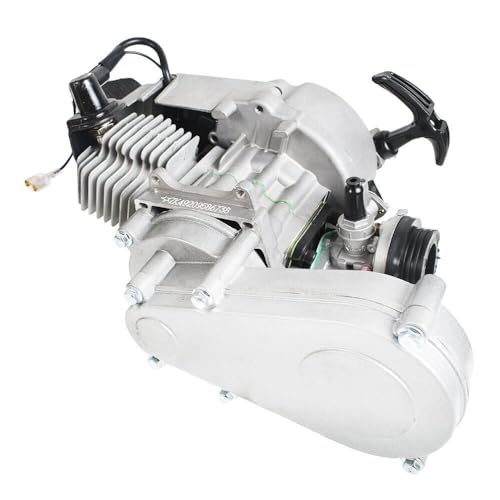mech_eng_matty
Well-Known Member
You CAN use nitrous oxide on a 2 stroke engine ! Nitrous oxide injection (aka chemical supercharging) works by freezing the intake air , making it super dense so that more than normal passes thru the inlet manifold and into the engine . And being more dense , it expands at a greater rate when combusted ~ shoving with a lot more force on the piston ! Because the air is a lot denser than normal , extra fuel needs to be supplied to prevent leanout damage to the engine . Obviously that extra fuel would need to have two stroke oil mixed in with it to add extra lubrication and IF the nitrous does happen oxidise the oil - then a synthetic 2 stroke oil would solve that problem !
MX 2 stroke engines are supercharged via the expansion chamber in combination with a reed valve - limit them to a standard pipe like what's on a Suzuki JR50 - GTMX80 Yamaha - 2 stroke step through etc and they're no better than a naturally aspirated 2 stroke lawn mower , outboard or whipper snipper motor !
Howstuffworks "Why is there a bulge in the exhaust pipe of my dirt bike?"
Le Espansioni
Cactus Jack,
Thanks for that, you make a very valid point in your argument.
It would be my assumption that quite a lot of Nitrous Oxide would be required in a 2 stroke as compared to a 4 stroke. As you said, the NO2 reduces the temperature of the inlet air hence making the air denser. On a 4 stroke this will work a treat because the air is being sucked straight into the combustion chamber via the inlet valve. However on the two stroke where the air/fuel is being charged via the crankcase, would this not mean that the system requires more air/fuel mixture to feed the crankcase volume and hence require more nitrous oxide to keep the said air at a cooler temperature?
Also, would the nitrous cooled air be detrimental to the lubrication effect of the oil on the big end of the 2 stroke engine? If the oil is more viscous, the friction on the bearings is going to be higher, causing more heat, reducing the effect of the nitrous and really leaving no major performance gains?
Thanks for the reply mate, hopefully you check this thread again to see what you think of my hypothesis.
Cheers
Matty
Last edited:










![LISEN Bike Phone Holder, [2025 Upgrade] Motorcycle Phone Mount, Bicycle Phone Holder, Handlebar Phone Mount, Dirt Bike Accessories, Bicycle Accessories, Gifts for Men for iPhone 4.7-7" Phone, Black](https://m.media-amazon.com/images/I/41FJGrZQ5ML._SL500_.jpg)
























![JOYROOM Bike Phone Holder Mount, [Anti Vibration] Bicycle Phone Mount, Dirt Bike Accessories for All 4.7-7.0" Phones, Motorcycle Phone Mount for iPhone 16 Pro Max/15/14/13/12 Samsung S25 Ultra/S24/S23](https://m.media-amazon.com/images/I/41MPtPvknUL._SL500_.jpg)






![Bike Phone Mount Holder, [Camera Friendly] Motorcycle Phone Mount for Electric Scooter, Mountain, Dirt Bike and Motorcycle - 360° Rotate Suitable for iPhone & Android Smartphones from 4.5-7.0 inches](https://m.media-amazon.com/images/I/51ZirRrsA+L._SL500_.jpg)
